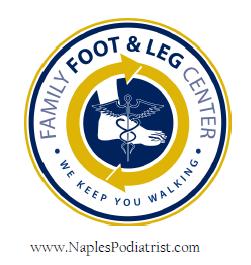We see a variety of patients from all sorts of community and word of mouth referral systems. Ultimately, patients often have far more medical issues than their feet and ankles alone. I will see various patients in different stages of oncologic management, either post chemo into radiation therapy for various malignancies, and even patients post Moh's surgery and are here for skin care of the legs and feet. Either way, various conditions may arise post chemotherapy to manage these various cancers, and often the feet and legs can have the brunt of the side effects manifesting in various ways. We will see patients with numbness, tingling, and even swelling in the legs after these treatments. We are called to manage these secondary conditions and have a multitude of protocols in place to achieve high levels of excellent outcomes in relief of these symptoms. Here is an overall synopsis of management of swelling of the ankles and legs:
Dr Brian Timm, DPM, FACFAS
Diplomate: American Board of Podiatric Surgery
(Soon to be named American Board of Foot and Ankle Surgery)
Swelling
What is swelling?
Swelling, otherwise known as edema, is a build up of fluid in the body. Swelling most often affects the dependent extremities (like the feet, ankles and hands) but swelling can also affect other parts of the body, such as the abdomen. Causes of swelling include:
- Fluid retention, including salt and water related to medication, heart disease, liver disease, or kidney failure.
- Blockage of veins or lymph system.
- Malnutrition.
Chemotherapy-related, or cancer swelling:
- Some chemotherapy drugs can cause fluid retention in the body. This form of cancer swelling is most noticable in the feet, ankles, hands, and face.
- Swelling or angioedema may also occur with hives as part of an allergic reaction. It is a vascular reaction that causes an increased ability for fluid in the cells to "leak" into the layers of the skin, resulting in swelling. This happens much less often than hives alone. The fluid retention causes swelling generally in the tongue, lips, or eyelids. Swelling of the airways can result in difficulty breathing, closing off of the airway and death. If swelling is happening along with signs of breathing difficulty seek help immediately.
What are some symptoms of swelling to look for?
- Feet and lower legs get larger when you sit or walk.
- Take a look at your feet, ankles and hands. Are they swollen? When you press on the skin with your finger, is there an indentation that stays for a few seconds? If so, you may have "pitting edema."
- Hands feel tight when you make a fist
- Rings are too tight
- Abdomen appears to be swelling or distended
- Shortness of breath (especially when lying down)
Things you can do to manage swelling:
- Elevate your feet as often as possible. (Either sitting in a chair with your feet on a stool with a pillow or in the bed or couch with feet up on two pillows)
- Do not stand for long periods of time.
- Avoid tight clothing (shoes, girdles, etc).
- Do not cross your legs.
- Reduce your salt intake if swelling is present. Avoid foods such as bouillon, potato chips, tomato juice, bacon, ham, canned soups, soy sauce, and table salt, for example.
- Try to eat a balanced diet (see eating well section).
- If your swelling is severe, consider wearing Jobst stockings or TED hose.
- Weigh yourself daily. Notify your doctor or health care provider if you have gained 5 pounds or more in a week.
- Take your medications exactly as prescribed.
Drugs or recommendations that may be prescribed by your doctor or health care provider for symptoms of swelling:
- Depending upon the causes of your swelling, your doctor or health care provider may prescribe a diuretic. Diuretics - may be known as "water pills" as they work by making you urinate out extra fluid. Some examples of this medication may include furosemide (Lasix), and Hydrochlorthiazide. You may receive this medication alone or in combination with other medications.
- Your doctor or health care provider may recommend that you see a registered dietitian to help plan a diet tailored to your condition.
When to call your doctor or health care provider about swelling:
Call your doctor or health care provider immediately:
- If you are short of breath.
Call your doctor or health care provider within 24 hours:
- If you have gained 5 pounds or more in one week.
- If you develop sudden and severe fluid retention.
- Your feet or hands feel cold to the touch.
- If you are unable to eat for more than a day.
- If you have urinated only a little bit or not at all.
- If the swelling appears to move up your arms or legs.









